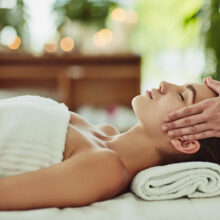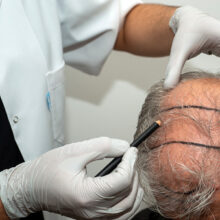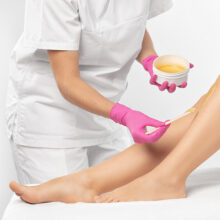Busting Skin Care Myths: Not Your Mom’s Skin Care
- Published: Wednesday, September 4th 2013
- in Beauty
by Celeste Hilling, healthy skin care expert and CEO, Skin Authority
 What are your go-to sources for information on skin care? Friends? Family? Google search? If you said yes to any of those sources, it is highly likely that you may be exposed to very common skin myths. As a skin care coach, I firmly believe that education is the #1 tool in helping you develop a skin health plan tailored to your needs. Skin is not only your largest organ, but also many of cosmetic issues which affect it are signals of a body in distress internally.
What are your go-to sources for information on skin care? Friends? Family? Google search? If you said yes to any of those sources, it is highly likely that you may be exposed to very common skin myths. As a skin care coach, I firmly believe that education is the #1 tool in helping you develop a skin health plan tailored to your needs. Skin is not only your largest organ, but also many of cosmetic issues which affect it are signals of a body in distress internally.
In this last post of my series on the science of summer skin, let’s explore: Busting Skin Care Myths.
Myth: Chocolate, sodas and fried foods cause acne breakouts.
Truth: These food sources are not the culprit. Acne is caused when the follicle/pore is blocked by accumulated dead skin cells and dried sebum/oil. The oil is trapped in the pore and creates an environment for bacteria to grow, which causes infection and inflammation resulting in breakouts.
Keeping the follicle clean and the bacteria levels low will maintain healthy, clear skin. I suggest using pure, unbuffered glycolic acid combined with salicylic acid to maintain low bacteria levels while keeping inflammation at a minimum. Once the inflammation is controlled, higher concentrations of glycolic acid (15%) can be used to penetrate deeper and kill bacteria within the follicle.
Myth: Moisturizers will make breakouts worse.
Truth: Hydration is friend, not foe. When the skin is denied moisture, the sebaceous glands respond by becoming more active and productive. The excess oil production contributes to breakouts. Also, the dry flaky skin from lack of moisture can block the follicles and incubate more bacteria that is trapped under the surface.
The use of a light moisturizer incorporating anti-inflammatory ingredients (mango, aloe, shea butter) with a sunscreen is the best protection for acneic skin. It provides a thin veil of moisture and protects from the potential of post-inflammatory hyperpigmentation which is a problem for acne skin as the blemishes heal.
Myth: Tanning the face will clear acne.
Truth: Tanning the face can dry out surface layers and may disguise acne temporarily, but the heat can be stimulating and contribute to the production of excess oil. More importantly, the UV radiation will cause more potential long-term damage to the skin than any slight benefit that may be gained. UV radiation from the sun causes 90% of the aging process and is responsible for most types of skin cancer.
I always say, “Sunscreen, sunscreen, sunscreen!” Using a lightweight sunscreen moisturizer is the best solution for acne skin. The use of self-tanners and bronzers are also good ways to minimize the appearance of acne.
Myth: You don’t need sunscreen on a cloudy day.
Truth: WRONG! UVA radiation from the sun comes through the clouds. One in five Americans are found to have skin cancer in their lifetime. Yet, only 20 percent of people wear sunscreen on a daily basis. (Source: Harris Interactive). Wear sunscreen rain or shine!
Myth: Using cucumbers on the eyes will eliminate puffiness.
Truth: It’s the coldness that counts here! The coolness of the cucumber slice on the eyes minimizes swelling, but you could also use a cold compress for the same results.
Puffy eyes can be challenging. Many times, the puffiness is due to general fluid retention from stress, salty foods, menstrual cycles, alcohol and crying. However, puffy eyes can also be an inherited trait that shows more as we age. Products that contain grape pulp, vitamin E and green tea extract work amazingly well in reducing puffiness and restoring the firmness and elasticity around the eye area. Ingredients that increase circulation like vitamin K and arnica will help prevent fluids from collecting in the eye area.
About the author: With two decades in the beauty and skin care industries, Celeste Hilling is the Founder, CEO and Product Formulator for Skin Authority. Skin Authority is respected for developing pure and powerful products without the use of parabens, added fragrance, dyes or animal testing. More on www.skinauthority.com, Facebook at Skin Authority, Twitter @SkinAuthority and @MissSkin



